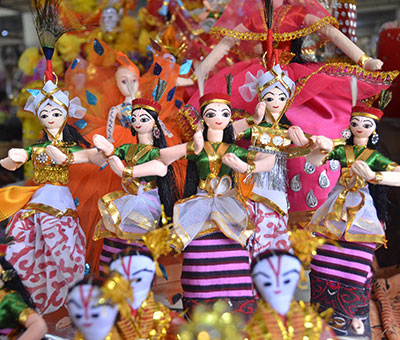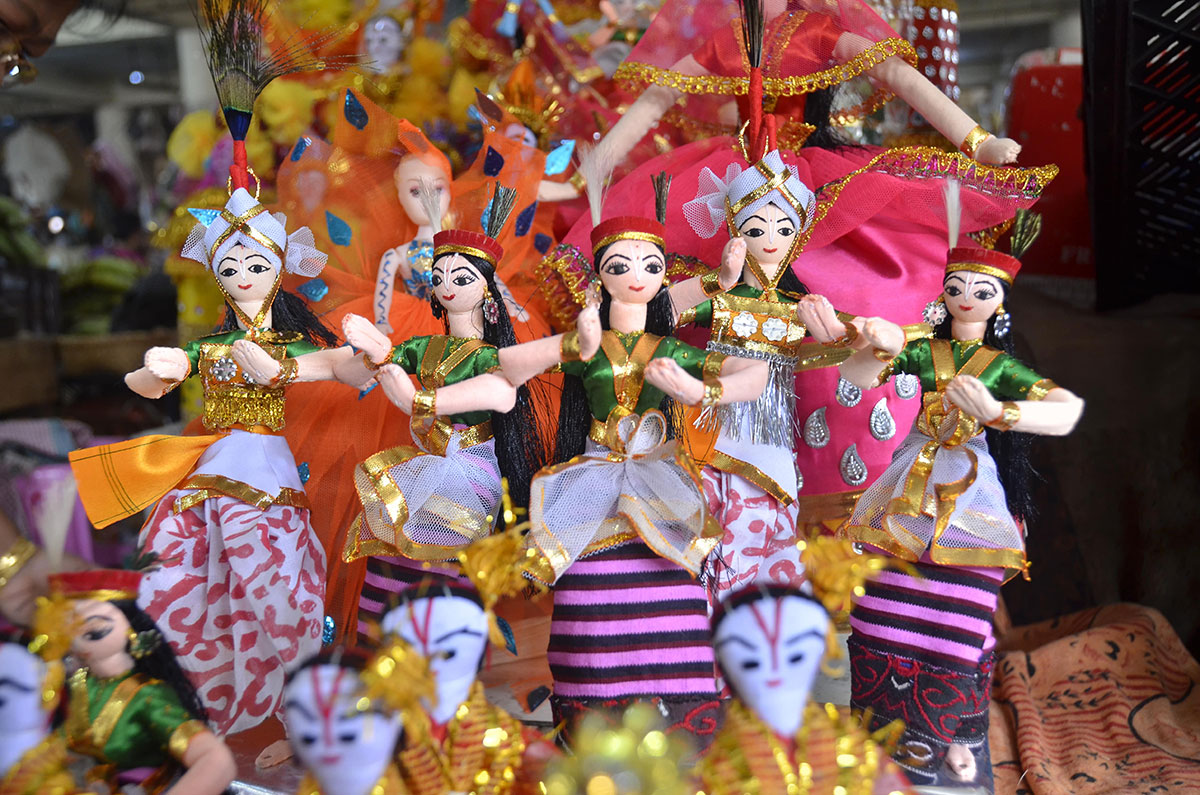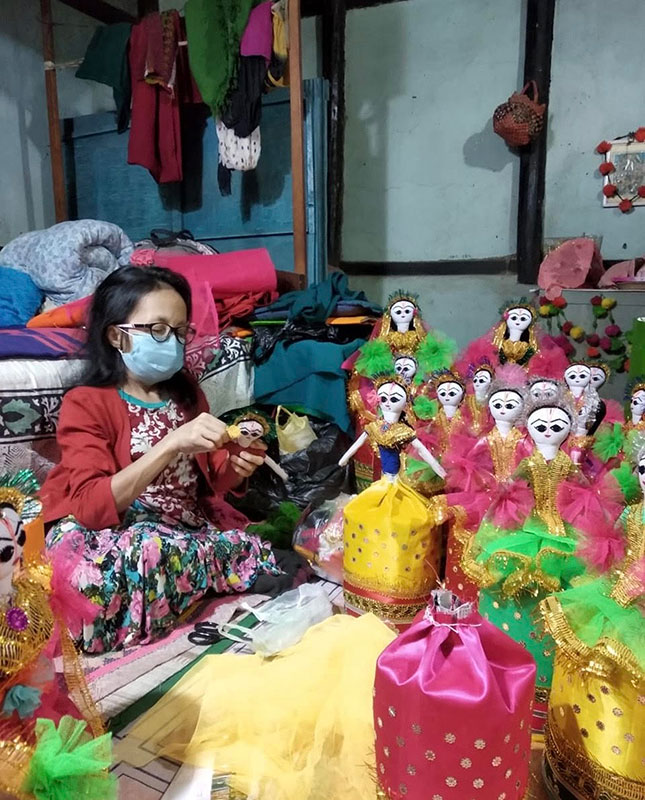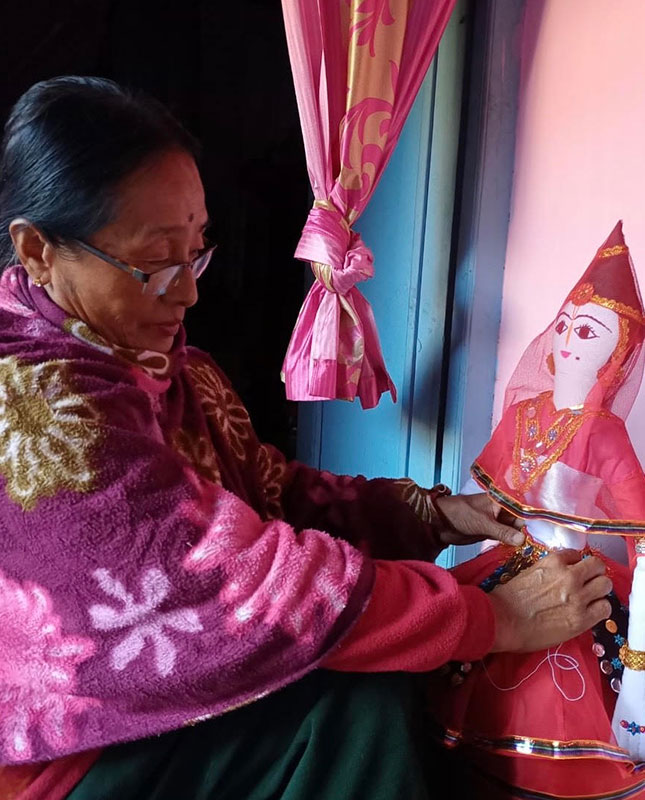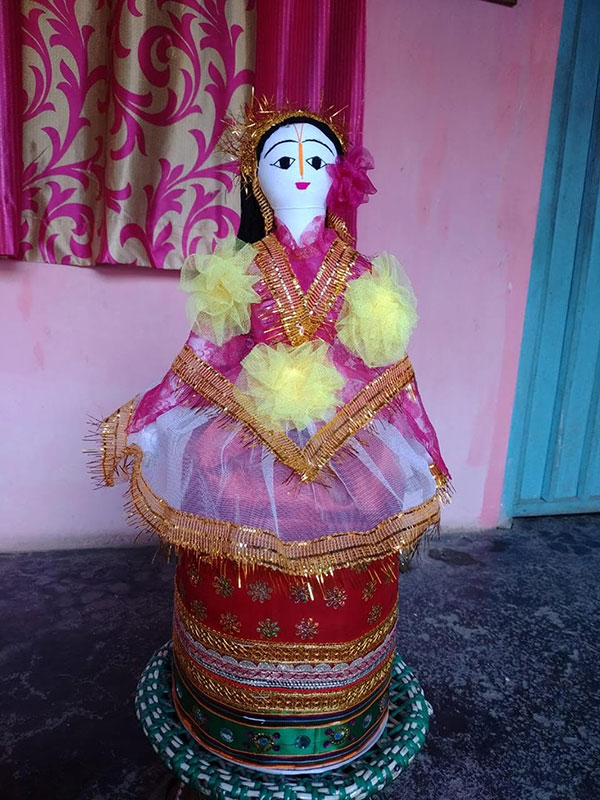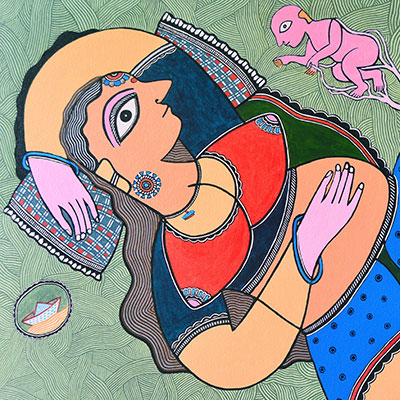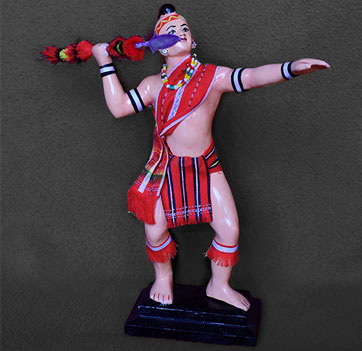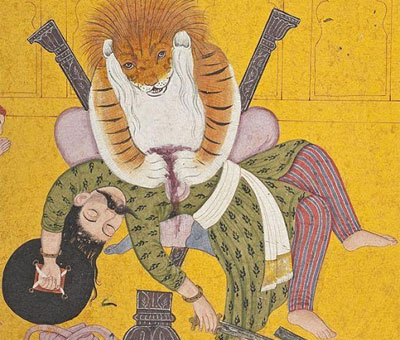It is interesting to realise how dolls have been a medium to give ‘life’ to inanimate objects, where people (children, to be precise) experience an inanimate object to do everything it cannot do in practicality but it starts to ‘feel’ things once it takes a form of a doll or a toy.
Dolls have been a huge part of our existence since the beginning of human history. Charlene Davis Roth states in her book ‘The Art of Making Cloth Toys’ that ‘a doll is a product of civilisation’, and rightfully so. They have served many purposes in our lives, from playthings to ritualistic objects to representations of ancestral beings.
The evolution of dolls have come a long way, starting from handmade to machine-made dolls. Even though machine-made dolls are thought as to be ‘more sophisticated’ and ‘less crude’, but the beauty of handmade dolls surpasses everything. I’d like to quote Roth here again, as she brings me to this realisation, by saying- “Handmade toys are unique and individual. No two hand sewn dolls are the same”.
Every doll has been made with a unique temperament, precision and timing. Every doll is made out of a different choice and chance, even with the same materials or process.
Dolls have been huge tradition(s) too in various parts of the world, and this article shall explore the rich tradition of dolls in Manipur, that is, Laiphadibi. Laiphadibi, also known as Laidhibi, are the handmade cloth dolls of Manipur. In Meiteilon, ‘Laiphadibi’ is the word for doll where ‘Lai’ means God, ‘Phadi’ means a dilapidated piece of cloth and ‘Bi’ means the feminine gender.
Laiphadibis are actually treated as beings with feelings. People call Laidhibis as ‘Ita’, which means ‘a female companion’. The tradition of Laiphadibi has been kept alive with many people passing them on the generations, mostly from the mothers to their daughters and the older sisters to their younger sisters. Children learn empathy, responsibility and nurturing from the very tender years of their growing up with Laiphadibi dolls, as their elders always teach the children to handle the dolls with care.
The Laiphadibis are put to a peaceful ‘sleep’ by the children, where the Laidhibis are made to lie down horizontally (symbolic to putting them in their sleeping positions) inside the Lubak (bamboo basket), with folded clothes acting as their own mattresses and pillows, along with a cloth piece as their blanket. The dolls sleep until their next playtime.
Quoting Akoijam Sunita, in one of her articles about the Laiphadibis, she says “If you do not put your Laiphadibi back in the Lubak (bamboo basket) after playing, they will cry at night under the banana plants. That was one scary imagery for child in a Manipuri household. Elders would use this imagery generously each time children would leave behind their dolls scattered after a play session.”
Even though this story can be scary to small children, the idea to teach children human values through dolls is remarkable, I feel. This way, a child learns to ‘feel the feelings’ of the dolls and they make sure they do not cause any discomfort to their first friends of life. When children learn to be empathetic with their human-like friends around, they learn to be empathetic towards actual humans around them too.
In the urban scenario, perhaps due to fast paced lives, easy access and mass production of dolls, children sometimes do not get to learn the importance of befriending and actually taking care of their dolls and toys, and many a times their machine-made dolls are left unattended, broken and unfixed, and sometimes with their stuffing breaking open from their distressed bodies, or their limbs, heads or eyes lost. It also reminds me of the heartbreaking conditions we get to see of the once worshipped idols used in Hindu festivals which haven’t been submerged into the water, in short, the ones which haven’t been taken care of. Every time we pass a road, we are most likely to witness a torn, broken, disheveled and an unattended idol left somewhere at the corner of the street. The same idol which was once bathed, fed, and put to sleep. The same idol to whom people had once surrendered their souls to.
It is refreshing to know how Laiphadibis claim space, nurturing and care, and they actually have people to listen to them. They have played a huge role in shaping the children’s character, values and morals, while educating them simplistically and playfully. This is a powerful example of the purpose of crafts in our lives.
Text by Anurekha Deb
Image courtesy: Soibam Birla Devi, Konsam Ibomcha Singh
Find out more about the craft and craft makers:
https://www.sahapedia.org/laiphadibi-dolls-manipur
https://www.sahapedia.org/laiphadibi-manipurs-cloth-dolls-and-their-vibrant-lives
https://www.sahapedia.org/laiphadibi-manipurs-cloth-dolls-and-their-vibrant-lives

